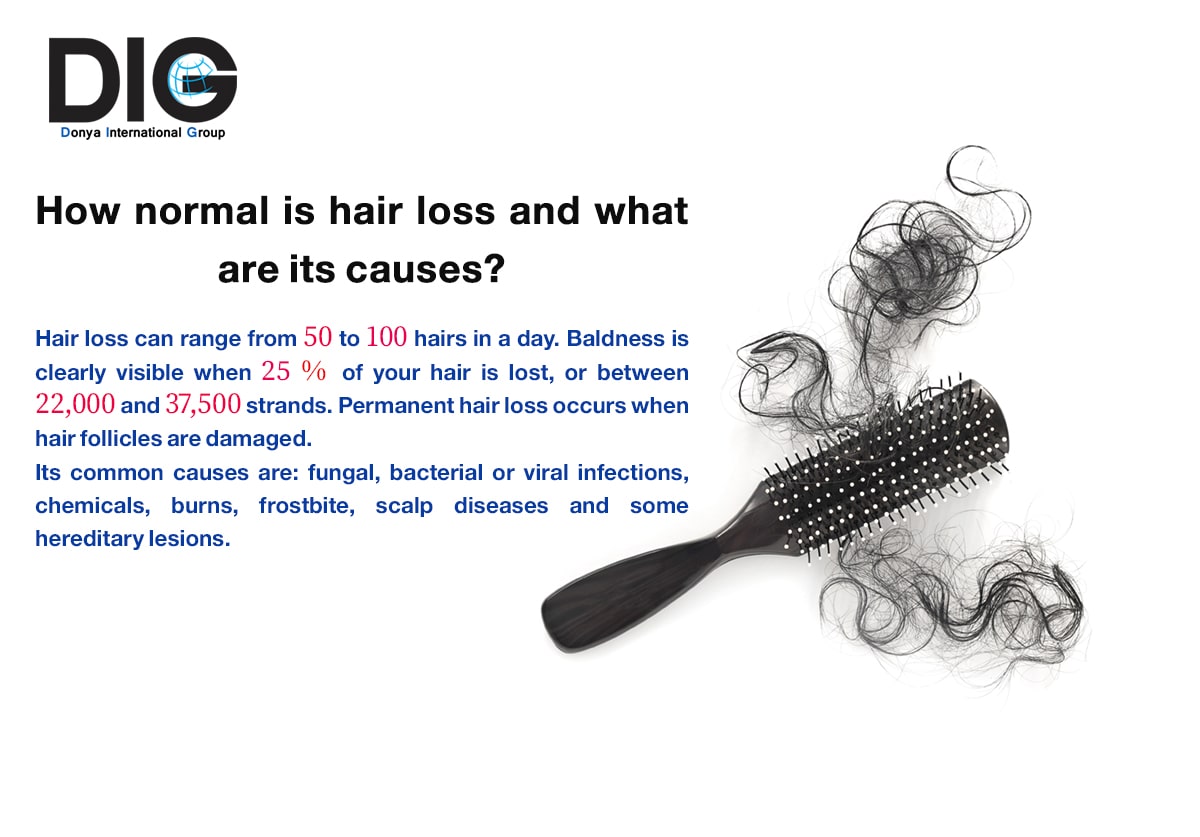2025-03-03 07:42:45
|
97 |
Hair Loss: A Comprehensive Look at Causes and Treatments
In this blog, we will delve into the various causes of hair loss, from genetic factors to diseases and specific conditions, and also introduce appropriate treatment strategies.
Hair loss is a phenomenon that can have significant aesthetic and psychological effects on individuals. While a small amount of hair loss during the day is natural, an abnormal increase in the number of hairs lost can indicate more serious issues. In this blog, we will delve into the various causes of hair loss, from genetic factors to diseases and specific conditions, and also introduce appropriate treatment strategies.
How Much Hair Loss is Normal?
Normal hair loss ranges from 50 to 100 hairs per day. This amount of hair loss is usually not alarming, as hair naturally goes through a growth cycle. However, when this cycle is disrupted, the amount of hair loss may increase, gradually leading to baldness or hair thinning.
Common Causes of Hair Loss
- Fungal, Bacterial, and Viral Infections: Certain infections can affect hair follicles and lead to temporary or permanent hair loss. For example, fungal infections like tinea capitis can cause hair loss in different areas of the scalp.
- Use of Chemicals: Chemicals used in some hair care products may damage hair and lead to hair loss. Additionally, some chemical treatments like chemotherapy can cause severe and, in some cases, permanent hair loss.
- Burns and Frostbite: Thermal injuries and frostbite can damage hair follicles and lead to hair loss.
- Scalp Diseases: Conditions such as seborrheic dermatitis and psoriasis can accelerate hair loss by causing inflammation and itching that affects hair follicles.
- Genetic and Hereditary Factors: Many individuals are predisposed to hair loss due to genetic traits. For instance, androgenetic alopecia, the most common type of hair loss in men, is a genetic condition that worsens with age.
Other Factors Influencing Hair Loss
Many other conditions and environmental factors can also affect hair loss:
- Fever and Severe Illness: Usually, 6 weeks to 3 months after any illness accompanied by a high fever, temporary hair loss occurs. This type of hair loss is usually temporary, and hair growth returns to normal within a few months.
- Thyroid Disorders: Hypothyroidism or hyperthyroidism can lead to hair loss. This type of hair loss is usually reversible with proper treatment.
Recommended Treatments for Hair Loss
The treatment for hair loss depends on its cause. In cases where hair loss is due to infections, hormonal disorders, or treatable diseases, controlling these conditions can manage hair loss. Some of the treatment methods include:
- Medication: Medications like minoxidil and finasteride are commonly prescribed for androgenetic hair loss.
- Natural and Herbal Remedies: Some people benefit from scalp massages with natural oils like coconut oil, olive oil, and argan oil, which may help strengthen hair follicles.
- Surgery and Hair Transplants: In more severe cases, hair transplantation or other surgical methods can help improve hair appearance.
Conclusion
Hair loss can have multiple causes, from genetic factors to diseases and environmental conditions. Understanding the cause of hair loss and choosing the right treatment can help individuals combat this problem and strengthen their hair. If you or someone you know is experiencing hair loss, consulting a dermatologist can be an important first step toward effective treatment.


